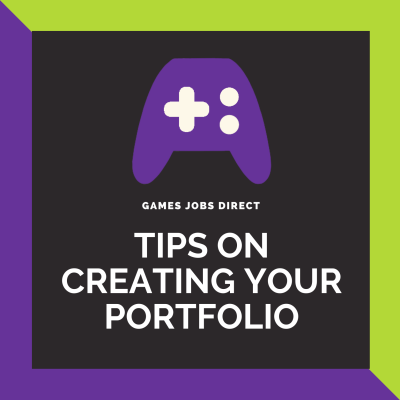02 Dec 2020

Having a CV and a cover letter is usually enough when you are looking for a new role within many other industries, however, making games is not only costly, it’s also challenging and as such, studios are usually very careful about who they hire to join their team of Devs.
Your portfolio is your number one promotional tool when it comes to showing examples of your previously created work and your skillsets. With this in mind, we’ve drafted together the important features of a portfolio that’ll help for all skillsets, whether you’re a programmer, artist, designer or any other dev role!
Your Introduction
Your introduction is the opening statement that should briefly explain who you are, what you do and how much experience you have.
Similar to what you would write on your CV, you should keep your introduction short and concise, making sure that you cover any key information such as where you’re based and what type of work you’re looking for.
Portfolio Content
The main point of your portfolio is to show that you have experience in making games.
Every skillset should present their portfolio differently, for example, an animator or artist will include images of their work, a programmer may decide it’s best to have a video and composers will have audio.
Showcase your best pieces of work with high-quality images which include a link to the live version. You can write a brief description alongside each image/video/audio to highlight ∂∂any technical skills, tools, engines, languages etc. used.
If you’ve been involved in quite a few games, it’s always recommended that you only include the ones that you believe to be your best work.
A testimonial from a client or player can also really help elevate your portfolio and will encourage studios to have confidence in your skills.
Don’t forget the important information
It’s easy to get lost in the creation of your portfolio that you may forget the important stuff – such as information about yourself!
You’ll want to include your contact information such as your email, Skype name and phone number.
You can add any personal details about yourself outside of work on a separate “about me” page, just remember to include any relevant online profiles such as your Linkedin profile or a blog.
Above all, you should make sure that your contact details are easy and accessible. You don’t want to put in all the work of creating your portfolio only to make it difficult to be contacted!
Make your portfolio looks good
Once you have all the content you need, it’s important to make sure it’s easy to read and easy to access.
Ensure that your pages are organised and easy on the eyes as anything less will look unprofessional.
Use sites such as WordPress or Artstation to host your portfolio. It’ll make it easy to access and easier to share.
Get in front of the hiring manager
Now that your portfolio is complete, we recommend running over our checklist to make sure you’ve covered everything you need to get you in front of the next hiring manager. It’s always an important factor to remember to check over the job description of the role you’re apply for to make sure your work really fits the requirements. By researching the company and getting to know their style, you can pull out the best of your work that will match what they are looking for.

When you feel that you’re ready. There’s only one more thing left to do – apply!
Whatever role you’re looking for – we’re pretty sure you’ll be able to find it on our jobs page.
Good Luck!
Keep Calm and waka waka...